
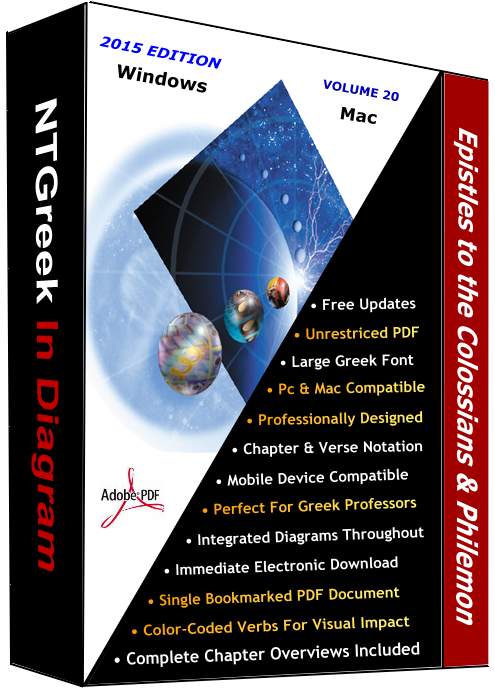
Title:
Epistles to the Colossians & PhilemonSeries:
NTGreek In Diagram: Volume 20Edition:
2015 EditionLast Update:
January 22, 2015ISBN-10:
193976212XISBN-13:
978-1-939762-12-2Language:
Greek diagrams with English diagramming notesFormat:
Electronic downloadable PDF bookmarked documentLength:
254 pages (including overviews, notes, and "printer-friendly" pages)Price:
$4.95 USDProbably the purpose of Epaphras' visit to Paul on behalf of those in Colossae was to seek his advice as to how deal with the false teaching which had arisen, and if allowed to continue unchecked, it would grievously threaten the stability of the local assembly. Paul crushes the basis for this heretical teaching in the Epistle to the Colossians.
Colossians was probably written about the same time as Ephesians and Philemon when Paul was first imprisoned in Rome. If this letter was written around 60 A.D., then Colossae was in the midst of economic woes, due to the success of its neighboring cities.
Colossians is one of the shortest of Paul's letters. It was clearly written to combat a particular danger within the assembly. False teachers were inculcating spurious doctrines and practices, demoting Christ from his position of unique pre-eminence, and encouraging various dubious mystical and ascetic religious practices.
Paul makes a brief thematic statement and then developed further it with long and complex subordinate clauses (i.e., 1:9-20; 2:9-15), much like that of Ephesians. Seventy-eight of ninety-five verses in Colossians bear a close resemblance to Ephesians. The stylistic features of Colossians does not only involve very long subordinate clauses, but also participial and infinitival constructions, as well as series of dependent genitives.
There are thirty-four hapax legomena in Colossians, making it difficult for the beginning Greek student to read it. Furthermore, the letter contains twenty-eight words that appear elsewhere in the Greek New Testament, but not in other Pauline letters.
The shortest letter of all Paul's letters is the Epistle to Philemon. It fits the genre of the Greco-Roman era which there are many examples among the papyri. The letter's purpose is to encourage Philemon to welcome his runaway slave as if he were Paul himself. The body of the epistle (vv. 4-22) follows the Greco-Roman art of persuasion. Paul's frequent word-plays aid to set the tone of his letter to Philemon, all of which makes it a delightful letter to study in Greek.
The Epistle to Philemon is a delicate yet one of Paul's most forceful appeals found in any of his other letters. Paul urges Philemon to receive Onesimus as himself. Apparently, Onesimus had some specific skills, valuable not only to Philemon, but also to Paul. Paul writes in verse 11, "Formerly he was useless to you, but now he has become useful both to you and to me." While the pun (Onesimus means "useful") has often been noted, the nature of Onesimus' real usefulness to Paul has not been explored, of which I leave to the reader to do so.
Because of Paul's writing style and unique vocabulary in the Epistle to the Colossians, it is therefore recommended that Epistles to the Colossians & Philemon diagram set be purchased after at least two semesters of Greek or equivalent.
One hundred and twenty-seven pages of grammatical and syntactical diagramming notes accompany this diagram set. Words are listed in their order of occurrence and contextually parsed. A short definition is also offered for most words, followed by its syntactical tag. These aids should be of further help for most who are students of the Greek New Testament. Screen shots of a few of these pages containing the diagramming notes for both Colossians and Philemon are available below.
The Epistles to the Colossians and Philemon are also part of the NTGreek In Diagram's Master Diagram, Master Diagram Upgrade, Pauline Epistles, and Prison Epistles Collections. The Collections include all diagrams in a single convenient bookmarked PDF document that makes navigation incredibly easy.
If you are a Greek professor or instructor and desire more information about group discounts, please contact me. Several Greek professors and instructors encourage their students to purchase the diagrams and use them as part of the class curriculum.
The following screen shots are representative pages from the Epistles to the Colossians & Philemon. The purchased diagram set includes all the diagrams and notes. Click on any thumbnail to view its larger image.
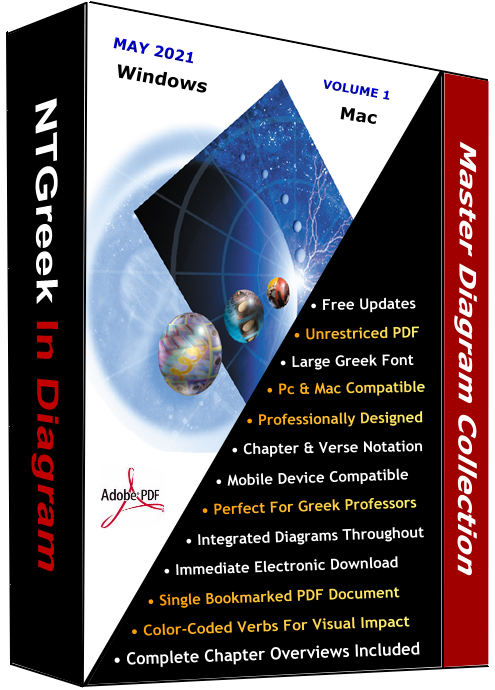
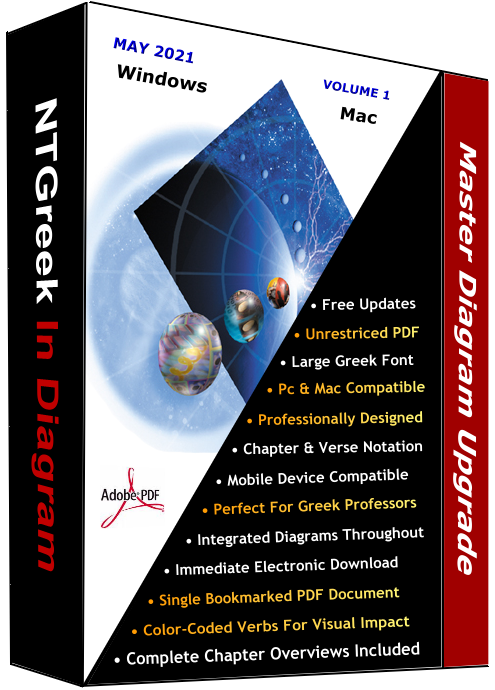
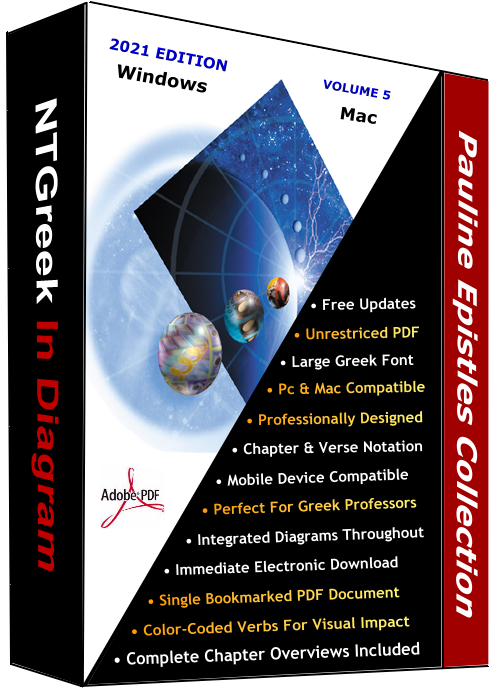
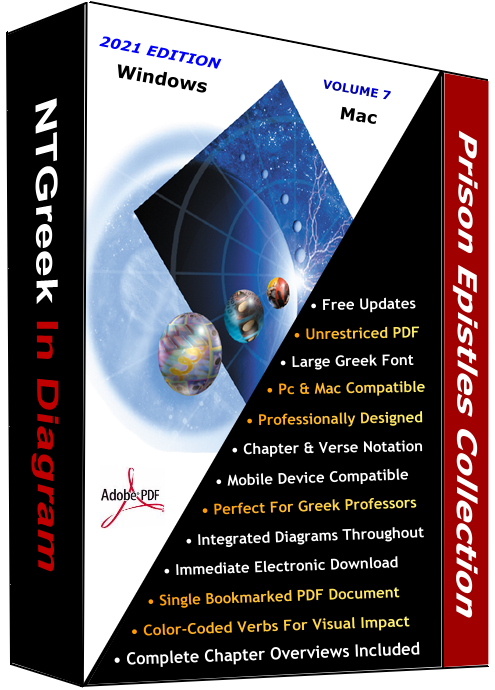
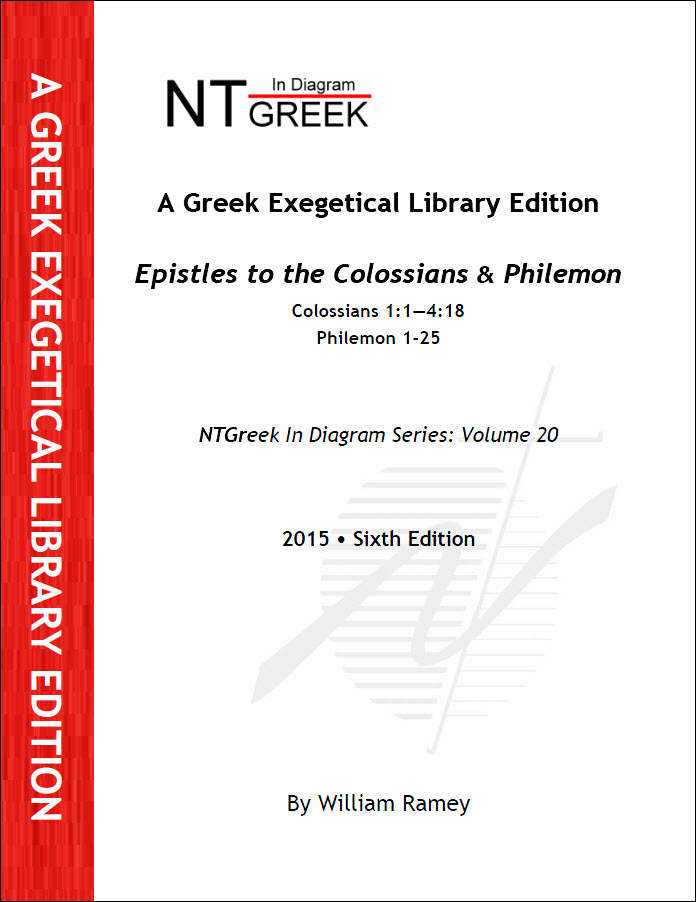
 Cover Page
Cover Page Title Page
Title Page Col 1:3-5
Col 1:3-5 Col 1:1 Note
Col 1:1 Note Col 1:13-15
Col 1:13-15 Col 1:22 Note
Col 1:22 Note Col 2:4 Note
Col 2:4 Note Col 2:8-10
Col 2:8-10 Col 2:18 Note
Col 2:18 Note Col 3:1 Note
Col 3:1 Note Col 3:13-15
Col 3:13-15 Col 3:13 Note
Col 3:13 Note Col 4:2-4
Col 4:2-4 Col 4:5 Note
Col 4:5 Note Col 4:17 Note
Col 4:17 Note Phlm 4 Note
Phlm 4 Note Phlm 8-11
Phlm 8-11 Phlm 16 Note
Phlm 16 Note